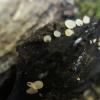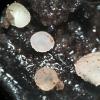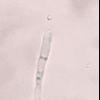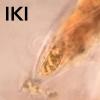
14-11-2025 16:26
 Marian Jagers
Marian Jagers
Hello everyone, On dead wood of Cytisus scoparius

14-11-2025 18:31
 Lothar Krieglsteiner
Lothar Krieglsteiner
Hello,can somebody provide me with a file of:Rothe

12-11-2025 09:25
 Viktorie Halasu
Viktorie Halasu
Hello, I need help with a pale terrestric Pseudom

11-11-2025 20:16
Bohan JiaHi, lastly I have found these tiny yellow decayin

09-11-2025 13:20
Hello.A tiny ascomycete, appearing as erupting gra

08-11-2025 00:29
 Francois Guay
Francois Guay
I found this species in Quebec, Canada, on herbace
Hymenoscyphus fructigenus?
Ethan Crenson,
26-10-2017 07:03
Hans-Otto Baral,
26-10-2017 07:23

Re : Hymenoscyphus fructigenus?
Completely impossible for a relationship with H. fructigenus. This one has rather short homopolar sporres and I am not even certain with the genus.
You should try better photos of the ascus apex, perhaps the amyloidity and the shape of the apical ring become more clear.
What you have is perhaps Hymenoscyphus varicosporoides = Cudoniella indica = Hymenosc. "calycinoides", a species with an interesting semiaquatic anamorph.
Try this link:
https://drive.google.com/drive/folders/0B5SeyOEkxxZhYXZaR2VWSG50aVk
You should try better photos of the ascus apex, perhaps the amyloidity and the shape of the apical ring become more clear.
What you have is perhaps Hymenoscyphus varicosporoides = Cudoniella indica = Hymenosc. "calycinoides", a species with an interesting semiaquatic anamorph.
Try this link:
https://drive.google.com/drive/folders/0B5SeyOEkxxZhYXZaR2VWSG50aVk








